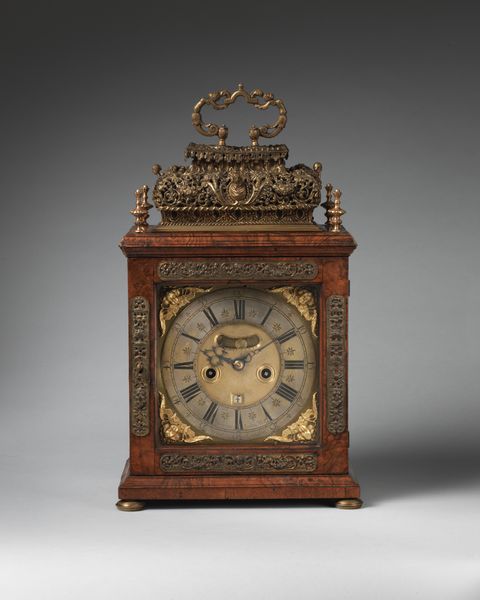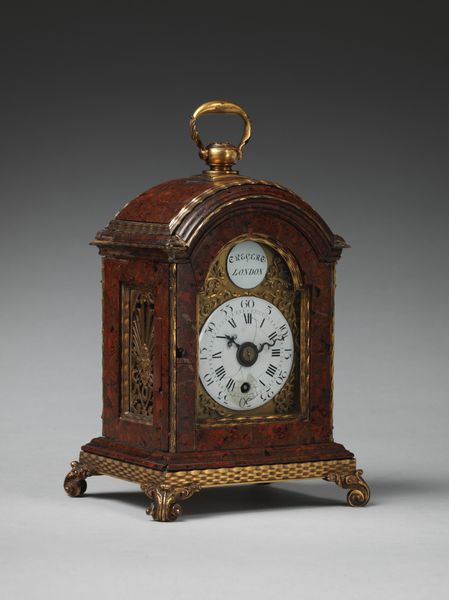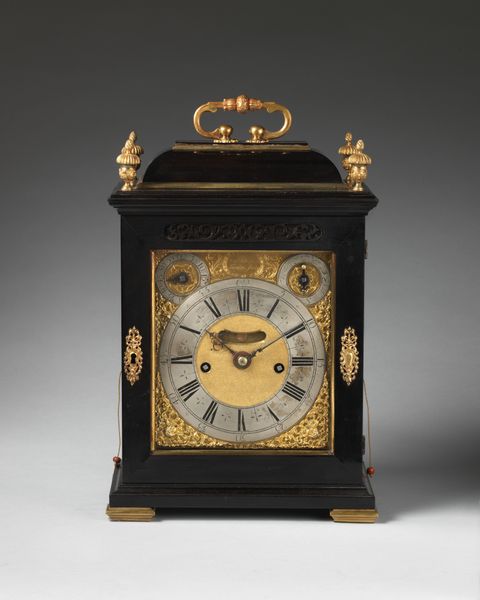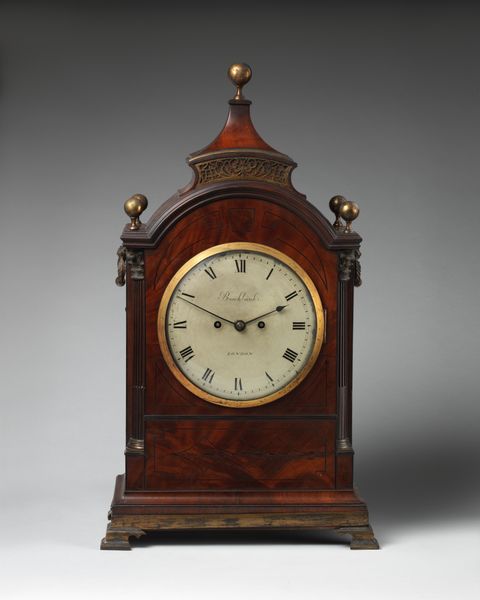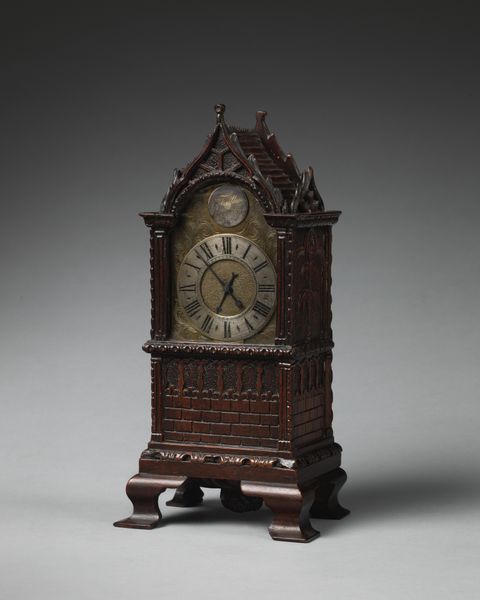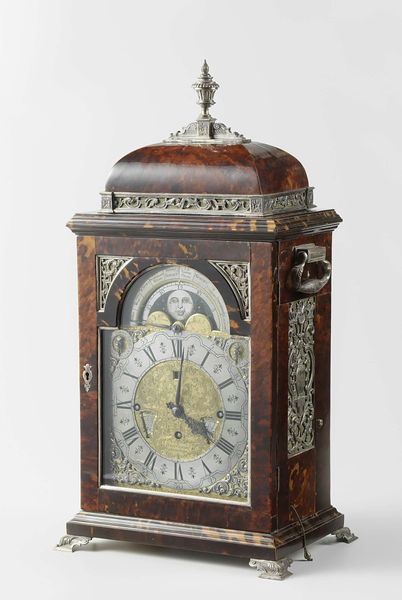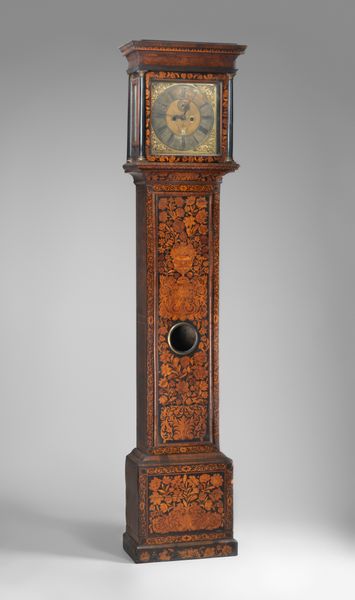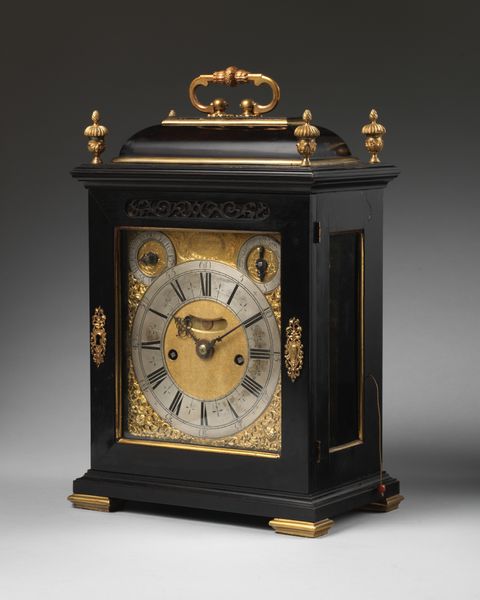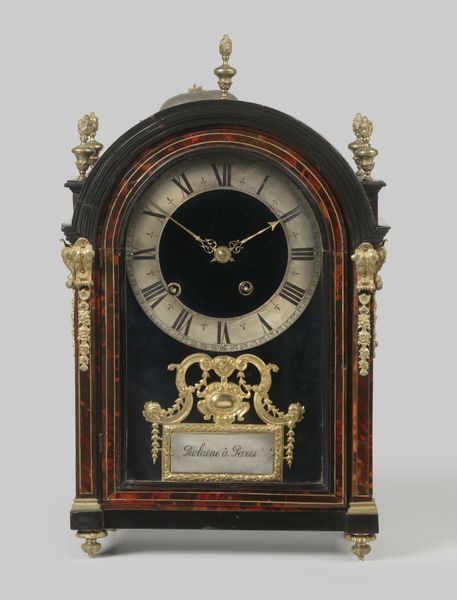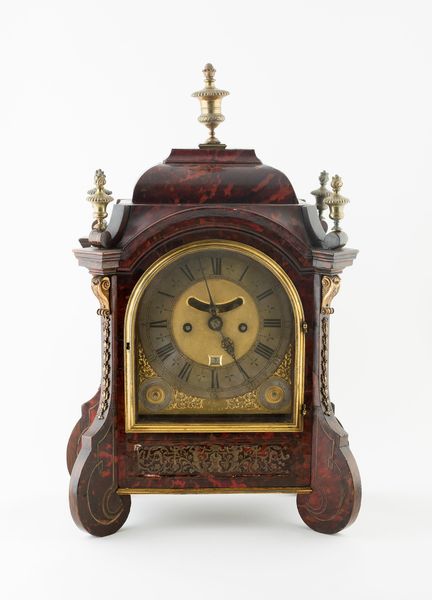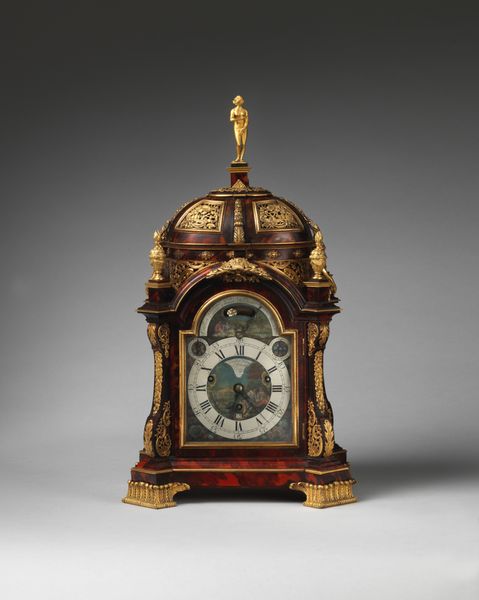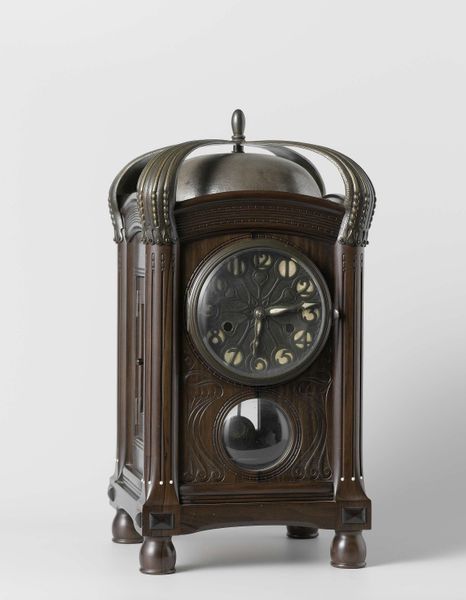
metal, sculpture, wood
#
baroque
#
metal
#
sculpture
#
wood
#
decorative-art
Dimensions: Overall: 15 1/2 × 10 1/4 × 6 3/4 in. (39.4 × 26 × 17.1 cm)
Copyright: Public Domain
Curator: This is a table clock or bracket clock crafted between 1695 and 1705, likely made by Joseph Windmills. It's currently part of the collection at the Metropolitan Museum of Art. The primary materials used appear to be wood and various metals. Editor: It gives off a somber yet luxurious feel, doesn't it? The wood has a dark, rich color and there's so much intricate metal detailing. Curator: Absolutely. You can really see the high level of skill needed to work both the wood and the metals like brass and bronze. The surface of the wooden case has a really unique burl pattern; I would wager that such complex patterns make it quite a feat to produce and polish such objects. We must consider the workshop that was responsible. Who did they hire? What tools and training did they use? How might such elaborate decoration advertise wealth or political prowess to potential owners? Editor: And look at the design. Clocks, from antiquity through the Renaissance and into the Baroque, became symbols not just of punctuality but of cosmic order and control over nature. Time, especially with these ornate details, starts to represent so much more than the hours ticking by. Curator: Time itself was becoming commodified then. The makers and owners certainly wanted to control its dissemination to those beneath them in society, too. I imagine this sat proudly displayed as a symbol of authority. These were complex, expensive pieces made by skilled labor. This clock tells us something about that power structure. Editor: The laurel wreath at the top further solidifies that authority. A sign of victory and triumph repurposed from ancient Rome. The presence of that icon, integrated with this new, innovative technology, makes it timeless and historically grounded at the same time. Curator: You're so right. And considering where it sits now, in the Met, surrounded by people still fascinated by the display of skill, we can say the clock still makes an argument for social difference, now in the key of taste or appreciation for craftsmanship. Editor: It makes one think about what it represents as much as the time. An image echoing power, tradition, and even mortality, despite the ingenuity of clockwork. Curator: It serves as an amazing intersection between functional object and an assertion of one's place in the social and economic structures of its time. The meticulous details that make up a whole represent the care involved in constructing power and control. Editor: Yes. The care someone once put in making this clock long ago becomes a way for us to connect across history.
Comments
No comments
Be the first to comment and join the conversation on the ultimate creative platform.
